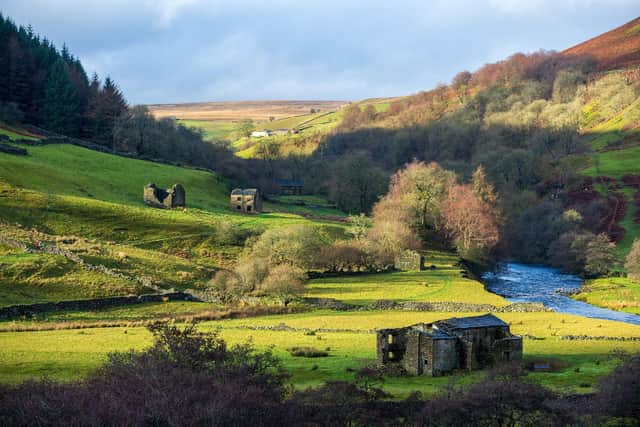Yorkshire Dales barn conversion policy loophole must be closed as locals are priced out of market
Members of the Yorkshire Dales National Park Authority’s audit committee called for a policy which was introduced six years ago with the intention of conserving the area’s iconic and historic agricultural buildings to be tightened to help ease the national park’s housing crisis.
The calls come ahead of a new Local Plan being developed for the park and follow a lessons learned review of the more flexible barns policy, launched to protect the park’s estimated 6,200 barns, of which 45 per cent are thought to be in poor or very bad condition.
Advertisement
Hide AdAdvertisement
Hide AdOfficers concluded securing the restoration, repair and re-use of traditional farm buildings, especially field barns, remained critical to retaining one of the national park’s special qualities.


However, the report stated after some initial high profile disagreements about its implementation, the introduction of a dual policy which gave owners choice over whether the barns became a home for locals or a holiday let, had “undoubtedly led to more barns being brought back into use”.
Officers said the other main aspect of the policy was to limit the occupancy of the homes created through barn conversions to try ensure that they were of wider socio-economic benefit to the national park, where there are several ongoing initiatives aiming at attracting younger residents.
They said the policy featured “a strong emphasis on meeting local housing needs”, but of the 198 planning consents granted, only 28 per cent have had local occupancy or rural worker restrictions placed on them.
Advertisement
Hide AdAdvertisement
Hide AdCommunity leaders left frustrated over the difficulty of developing affordable housing in the national park have claimed the dual policy had resulted in the overwhelming majority of permitted conversions giving becoming holiday lets, which could be sold for about £500,000.
Previous policies had required local occupancy occupation of most barn conversions, the only exception being where it was linked to farm diversification, where holiday letting was also permitted.
Some 56 per cent of the barn conversions since 2015, most of which have been concentrated in the Craven area of the national park, and in particular in Wharfedale, have given the owners choice over whether they become a home for locals or a holiday let.
However, the meeting heard many locals were being priced out of buying barns, as even derelict ones with planning permission to be converted were now being marketed at between £150,000 and £200,000. Officers added at £1,500 per square metre, the costs of converting barns were usually higher than new-builds.
Advertisement
Hide AdAdvertisement
Hide AdDavid Ireton, the North Yorkshire County councillor for Upper Craven said he had been a supporter of the dual policy, but had changed his mind.
He said the authority was set to examine whether a principle place of residence requirement should be brought in on the barns, “which would then allow new blood to come into the Dales with children”.
Mr Ireton said: “It’s disappointing that so many of these have gone for holiday lets. We’re trying to encourage people to come and live in the Dales, which has got t be good for keeping schools and businesses open.”
Swaledale councillor Richard Good said giving approval to a barn conversion that enabled a Swaledale farming family to remain in the Dales had done much good for the authority’s image.
Advertisement
Hide AdAdvertisement
Hide AdHe added: “Every time there is one that’s to be a holiday cottage there’s load of muttering, but what can we do about it? Not a great deal.”
The authority’s longest-serving member Robert Heseltine said the barns remained an opportunity to “give that indigenous population a chance to have a permanent home”.
He said: “This is something this authority has to address. There’s been an explosion of tourist accommodation, particularly at the lower end with yurts such like, but tourism isn’t the be-all-and-end-all of the economy in any rural area. The need to bring young blood into communities is something that should never be ignored.”
